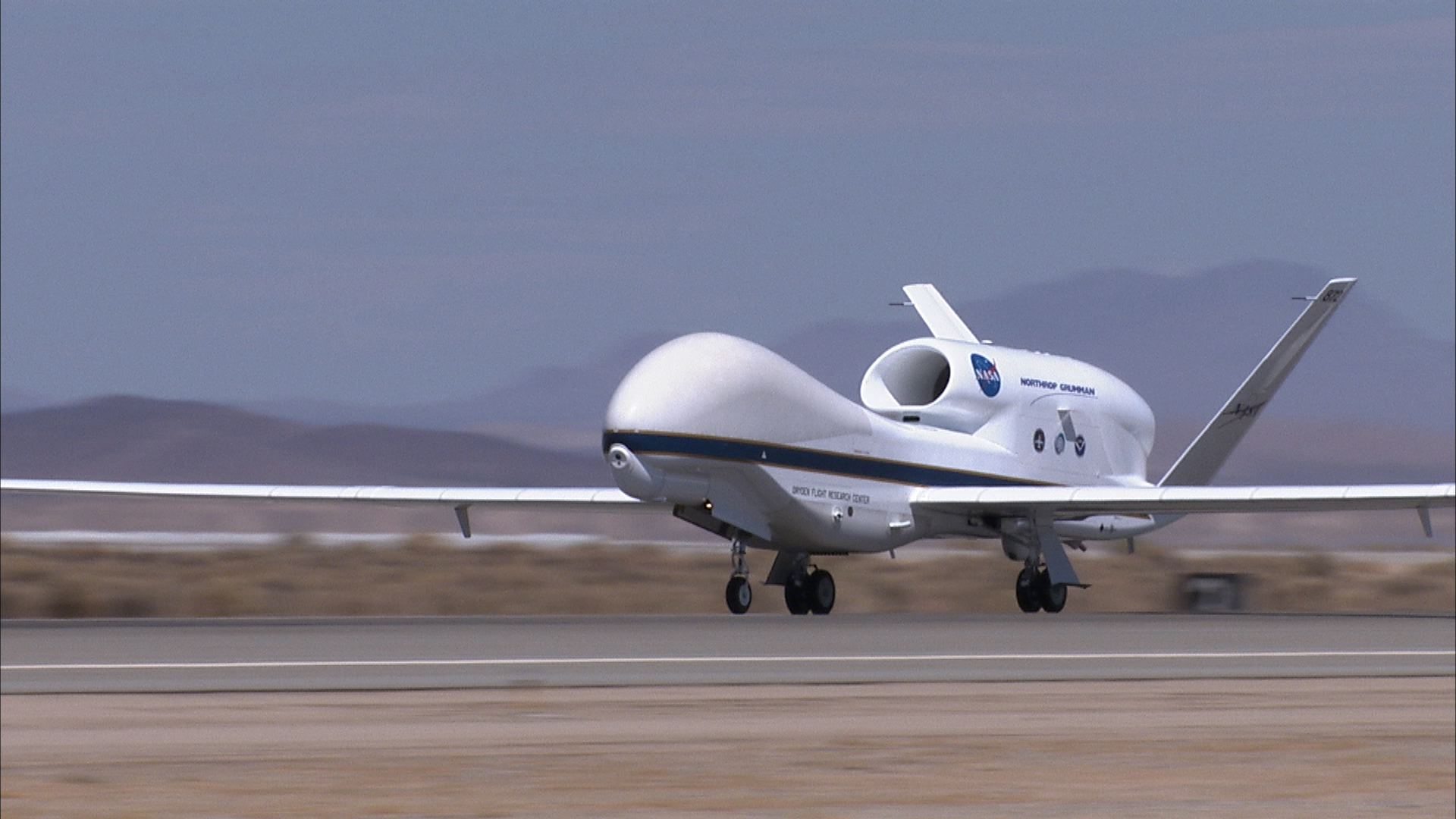Global Hawk Takes High Altitude Imaging Wind and Rain Airborne Profiler (HIWRAP) Data
The dual-wavelength (Ku- and Ka-band) High Altitude Imaging Wind and Rain Airborne Profiler (HIWRAP) flew for the first time on the Global Hawk Unmanned Aerial Vehicle (UAV) during the 2010 Genesis and Rapid Intensification Processes (GRIP). The HIWRAP is able to measure line-of-sight and ocean surface winds for a longer period of time than obtained by current satellites and lower-altitude instrumented aircraft. HIWRAP is conical scanning, and winds and reflectivity can be mapped within the swath below the Global Hawk. This visual will highlight the UAV measuring Hurricane Karl's HIWRAP Ku-band observations on September 16 from 18:53:10 through 19:19:18.
The dimensions of the Global Hawk were exaggerated by a factor of 10 so the viewer could see the UAV. The Global Hawk actual dimensions are 44.4 ft (13.5 m) length by 116.2 ft. (35.4 m) wingspan by 15.2 ft (4.6 m) height. The movie starts as the Global Hawk flies over Hurricane Karl to reveal a hot tower. Hot towers are important to understanding hurricane intensification because they can carry hot moist air through the high layer of cirrus clouds above a hurricane. Hot towers are hard to study because they go so high and they do not last very long. The structure of this storm is seen through reflectivity data where dbz is between 25 and 40. The HIWRAP data is colored based on the height from the surface. Red shows 12 km above sea level, orange is 10 km, yellow is 7.5 km, green is 6 km, and blue is under 6 km.
For more information on GRIP and other elements of NASA's Hurricane and Severe Storm Sentinel project, visit http://www.nasa.gov/HS3.
The Global Hawk Unmanned Aerial Vehicle records HIWRAP KU data of Hurricane Karl on September 16, 2010.
This video is also available on our YouTube channel.

HIWRAP measures a burst of convection often called a "Hot Tower" measuring over 12 km high.
This is the same data sequence with the "Hot Tower" labeled.
Credits
Please give credit for this item to:
NASA/Goddard Space Flight Center
Scientific Visualization Studio
-
Animators
- Lori Perkins (NASA/GSFC)
- Horace Mitchell (NASA/GSFC)
-
Greg Shirah
(NASA/GSFC)
-
Producer
- Jefferson Beck (USRA)
-
Scientists
- Gerald Heymsfield (NASA/GSFC)
- Stephen R. Guimond (University of Maryland)
- Scott Braun (NASA/GSFC)
-
Project support
- Matthew McLinden (NASA/GSFC)
- Scott Hanger
Series
This page can be found in the following series:Datasets used
-
GRIP High Altitude Imaging Wind and Rain Airborne Profiler (HIWRAP) [Global Hawk UAV: HIWRAP]
ID: 772
Note: While we identify the data sets used on this page, we do not store any further details, nor the data sets themselves on our site.
Release date
This page was originally published on Thursday, August 1, 2013.
This page was last updated on Thursday, October 10, 2024 at 12:03 AM EDT.
![Music credit: 'Cellular Signals' by Laurent Levesque [SACEM] from Killer TracksComplete transcript available.Watch this video on the NASA Goddard YouTube channel.](/vis/a010000/a012100/a012195/LARGE_MP4-12195_EPOCH_Hurricanes2_large.00151_print.jpg)

